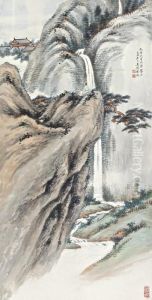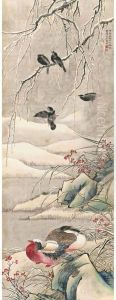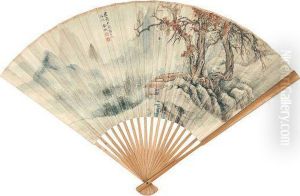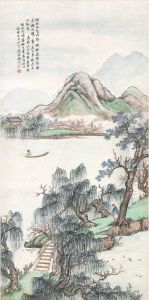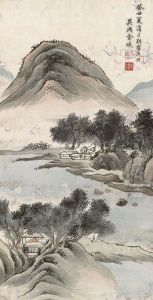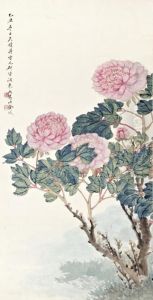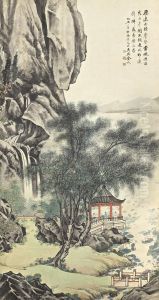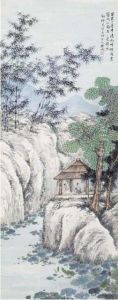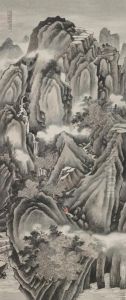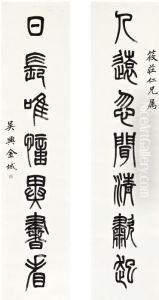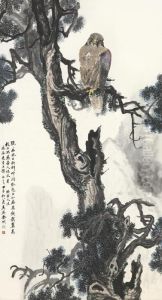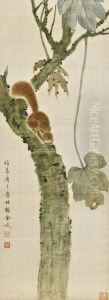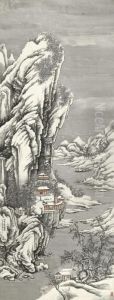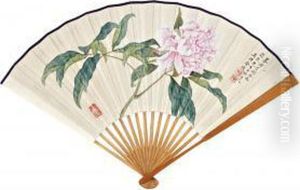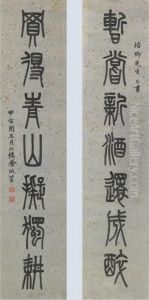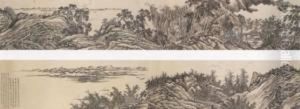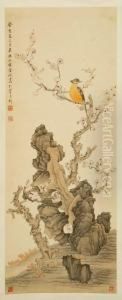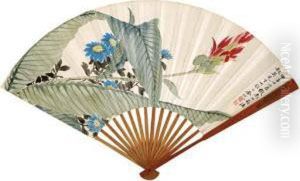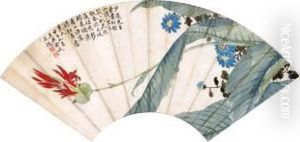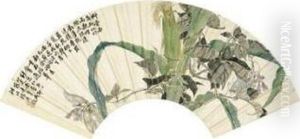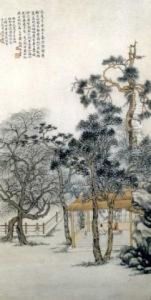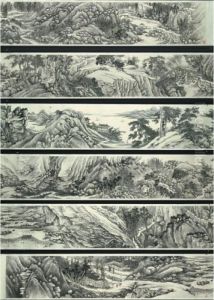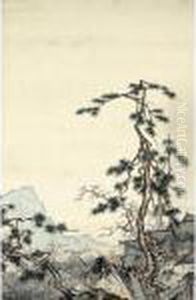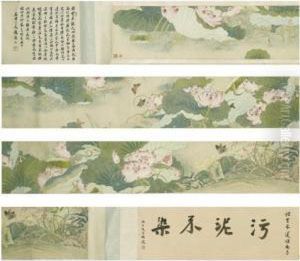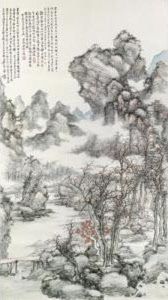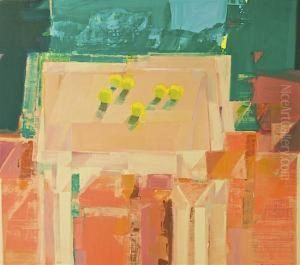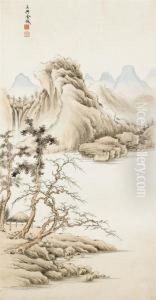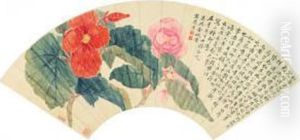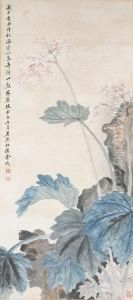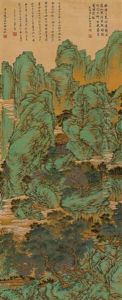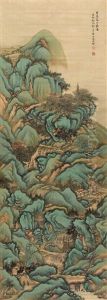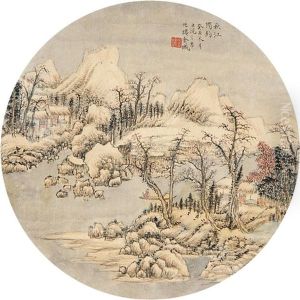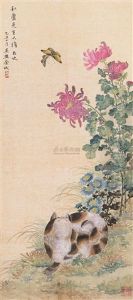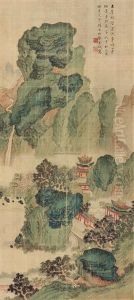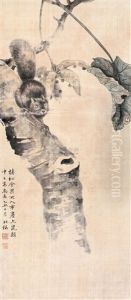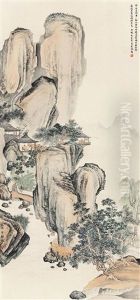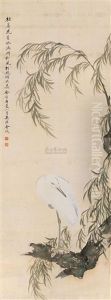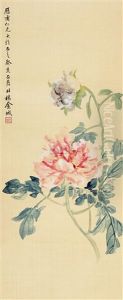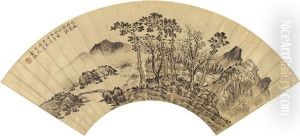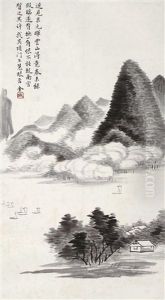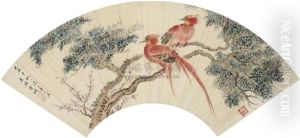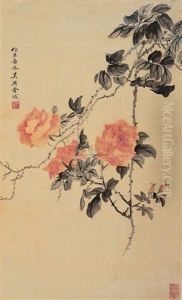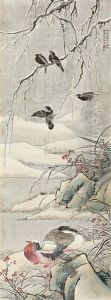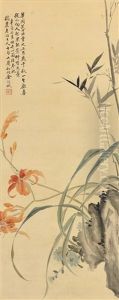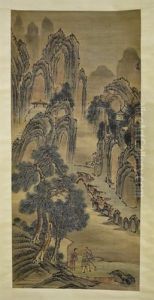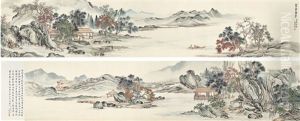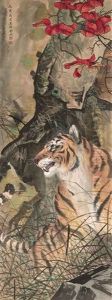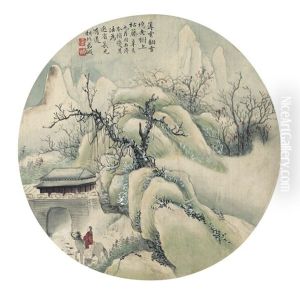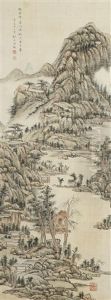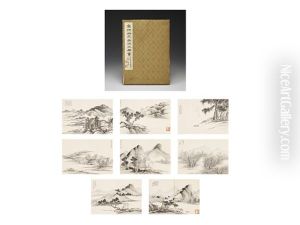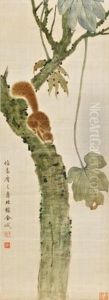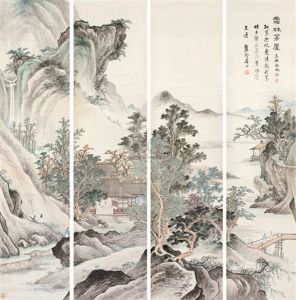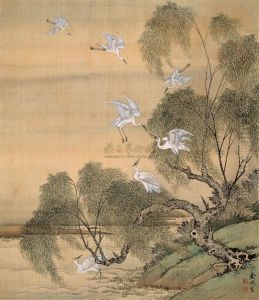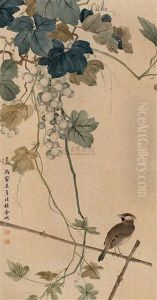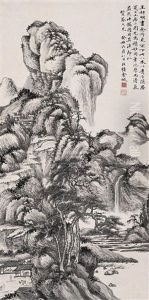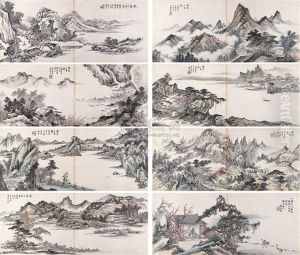Jin Cheng Paintings
Jin Cheng was a Chinese artist known for his traditional Chinese paintings, particularly landscapes. Born in 1878 in the Jiangsu Province, Jin was raised in a time when China was experiencing significant political and social changes. He was part of a generation of artists who were grappling with the tension between the traditional Chinese art forms and the influence of Western art that was beginning to permeate Chinese culture.
Jin Cheng's artistic education was rooted in the classical Chinese tradition. He was particularly skilled in the 'shanshui' (mountain-water) genre of painting, which emphasizes the spiritual and aesthetic beauty of nature. He was influenced by earlier masters of the Ming (1368–1644) and Qing (1644–1911) dynasties, and he worked to emulate their techniques and brushwork in his own compositions.
Throughout his career, Jin Cheng maintained a focus on traditional themes and methods. However, he was not completely isolated from contemporary trends. The late 19th and early 20th centuries were a period of great cultural exchange between China and the West, and Jin Cheng's work subtly reflects an awareness of these new artistic ideas. His paintings often exhibit a serene and harmonious quality, with a fine attention to detail and a masterful use of ink washes to create depth and atmosphere.
Jin Cheng's contribution to Chinese art was significant in that he helped to sustain the classical painting traditions during a time of great change. His works are considered a testament to the enduring appeal of traditional Chinese aesthetics. Jin Cheng passed away in 1926, leaving behind a legacy that continues to be appreciated by art enthusiasts and scholars. His paintings are not only treasured as beautiful art pieces but also as cultural artifacts that represent a bridge between the old and the new in Chinese art history.
